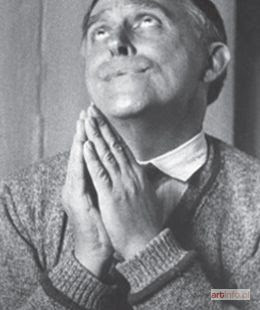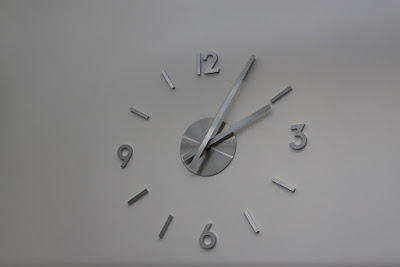There are lives that are so painful. I shutter when I hear the name Unica Zürn. Her life was not a bundle of warm joy, but more of a gothic horror story than anything else. A brilliant artist and writer, but covered in the cloak of pure misery, and being a woman in that social setting of the arts in the 20th century - is not that totally hopeful or beneficial to her fragile state of mind. Yet, she did remarkable works of art.
Her partner-in-art-crime was the artist Hans Bellmer, who is known for his work with doll parts. Disturbing sculptures of limbs torn apart, and then re-placed in a creative fashion. Highly sexualized, as well as being demented, in other words a great artist. Zürn and Bellmer, if this was a work of fiction, this would be a perfect match-up. Alas, the truth is painful.
She was 37 when she met Bellmer (he was 51), and came from a very troubled background. More likely she was sexually abused by her older brother, had a father whom she adored but he wasn’t around much, and his third wife, the mother of Unica, was detested by the daughter. She had a job with UFA, the German film company, at the height of the Third Reich, and was married to a much older man, where she had two children. They divorced some years later, and she lost custody of her two children due to her mental problems. During the 40s and early 1950s, she was described as a happy person. Then she met and moved in with Hans.

Throughout her adulthood, Zürn was a remarkable artist, who totally used her madness or illness as a springboard for her work. She wasn’t an “outside” artist. Zürn was totally conscious of what she was doing. She has been compared to Anton Artaud, who both, shared the same doctor. And both, Zürn and Artaud were obsessed with their mental state or illness. This, I find, to be a tricky situation. I have always been attracted to the artist who’s mentally ill. In fact, I collect books on these figures. The thing is, as I dwell into their work and madness, I sort of forget about the pain that they live with. Blame it on my love for the surface, but often I miss the textures and deepness of such artists as Unica Zürn. This, I finally got over the complex, and now, I see her work beyond her illness.

I’m not going to lie. Zürn is a very attractive woman to me. As I look at photographs of her, I can detect disturbance, but also the beauty of her face. The yin and yang, or opposites that gives so much textural levels. I sense her madness opened up a horrible world for her, yet, it’s the source that gave her the tools of her art. She used those tools wisely, even though her life wasn’t a happy one. I have read bits and pieces of her literature, but it is mostly the drawings that draw (no pun intended) me into her world. These inks work on paper is sort of like a map, but not one that shows a direction or destination. A landscape of her inner-thinking. Zürn has powerful eyes, and that is one of the main visual themes in her drawings. Some are human faces, but also eyes from a beast, creature or demon. They’re disturbing, but also very beautiful. Her technique is exquisite, and very refined.
It’s not surprising that Bellmer used her as a muse - which can be a deadly position to be in for a human being. The idealized figure for inspiration can leave one feeling empty, in such a relationship. Life, or lives, is what it is that lasts in one’s lifetime. Yet, art, does have the ability to go beyond that lifeline. But often comes with a price. All reports say that their relationship was a hard one. He photographed her in various poses naked or half naked, but tied up with rope or string - where she resembles the discarded doll parts of his artwork. I now wonder if his work is more of ‘their’ work. A collaboration not only between lovers, but also as artists. I suspect she brings in something more than just inspiration. The photographs that he took of her, as a tied-up piece of sculpture, can be seen, on the surface, of one dominating over the other. But I wonder if that’s true. I suspect that she was very much part of the process in these photographs. I don’t think she’s a passive personality, at least, I don’t get that aspect of her personality through her work.

Hans Bellmer very much looks like the perverse evil demented artist. I haven’t seen every image of Bellmer, but not one so far, is he fancy-free and smiling. Nor does she smile. Happy-go-lucky couple they ain’t! Nevertheless they both produced work that is erotic, thoughtful, disturbing, and for me, painful. Not his life so much, but just reading about Zürn’s narrative and how things just got darker for her. She suffered from bad effects of an abortion as well as mental pain regarding her life as an artist and a partner-in-art-crime with Bellmer, and both suffered from severe money issues as well. To me, there is nothing sadder of the fact he told her he couldn’t take care of her, due to his severe stroke at the time. It was around this time she decided to go out of their fifth story window. There’s a lot of tragedy connected to her art. It’s not a good-feel trip through the park. It is more like a walk in the Grimm Brothers’ park within a dark forest, and yes, one can imagine human limbs hanging from the trees.

It’s fascinating that a lot of artists who use the pen on paper, are also writers. Off the top of my head I think of Jean Cocteau, Artaud, Denton Welch, and Boris Vian, among many others. Zürn, I feel, needed both mediums. I suspect that one medium leads into the other - and writing/drawing was very much of the standard Surrealist practice - and she and Bellmer were close to that movement. Zürn serves many purposes. One as a person who was very much part of the Surrealist world, in their later years, and her work with another artist - Bellmer. But we have to remind ourselves what she put on the table. Which was very much her drawings and profound writings/novels that pretty much exposed her inner-thoughts as well as the position of a woman in the arts - either used as a muse, but more likely a collaborator who put more than her two cents in the soup. Beautiful, brilliant, and a great artist - that’s Unica Zürn in a nutshell.





















































